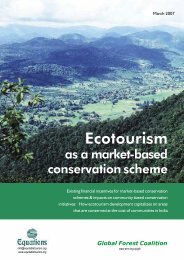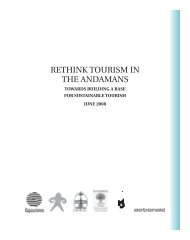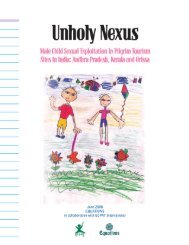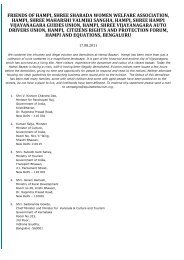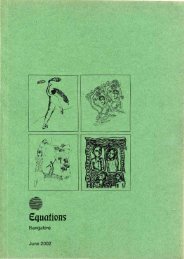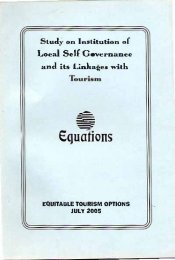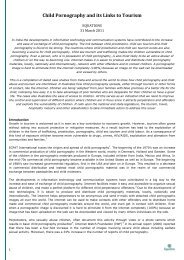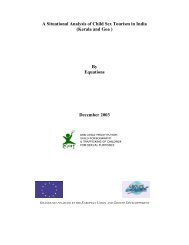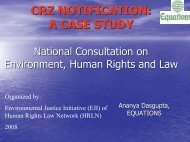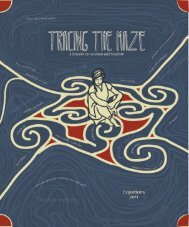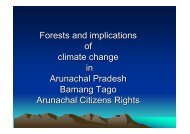Nilgiris Biosphere Reserve - Equitable Tourism Options
Nilgiris Biosphere Reserve - Equitable Tourism Options
Nilgiris Biosphere Reserve - Equitable Tourism Options
Create successful ePaper yourself
Turn your PDF publications into a flip-book with our unique Google optimized e-Paper software.
Karnataka and again, more recently, in the Muthanga Wild Life Sanctuary in<br />
my own state of Kerala. My presentation here will dwell mostly on my<br />
experience of the indigenous peoples' struggles in the Protected Areas of<br />
Nagarhole and Muthanga in South India.<br />
Throughout history, the indigenous people had fought for their rights. This is<br />
to say that we are demanding much more than 'benefits.' We are<br />
demanding RIGHTS overforests.<br />
And we are also demanding that there is an urgent need to redraw the<br />
'boundaries', if at all drawing boundaries protect nature.<br />
The talk about extending 'benefits' is in fact a cover-up for several<br />
DENIALS, several costs borne by the people. Firstly the indigenous people<br />
have been robbed of their traditional/customary rights to land and<br />
territories. Secondly, they have been robbed of their historical role in<br />
conservation of nature. These two fundamental denials have by now turned<br />
the indigenous peoples in most part of India into victims rather than<br />
beneficiaries of the Protected Area management system and, the forest<br />
management system, in general.<br />
The Struggle in the Nagar Hole (Rajiv Gandhi) National Park<br />
In the case of the Nagarhole National Park in the State of Karnataka, there<br />
was indeed much talk about the 'benefits'. And the promises were made out<br />
by none other than the World Bank.<br />
The Nagar Hole national park is now a part of the <strong>Nilgiris</strong> <strong>Biosphere</strong><br />
<strong>Reserve</strong> -- one of the 440 biosphere reserves in 97 countries where the<br />
UNESCO is implementing the Man and <strong>Biosphere</strong> program. <strong>Nilgiris</strong> was<br />
the first internationally designated biosphere reserve in India. Several<br />
ethnic groups had inhabited the area from time immemorial. They included<br />
the Cholanaikans, the only surviving hunter-gatherers of the Indian<br />
subcontinent, concentrated in the Nilambur area. In 2000 there were<br />
11,60,200 permanent inhabitants within the biosphere reserve subsisting<br />
on the use of natural resources such as medicin1 plants, agriculture and<br />
agri-horticulture.<br />
An area of 57,1 55 ha in Nagar Hole had been constituted as a sanctuary in<br />
71 NiJagiris : F adiIIg G/ory



